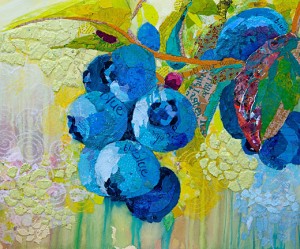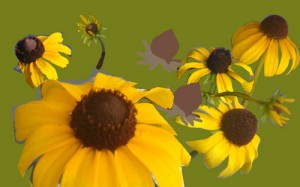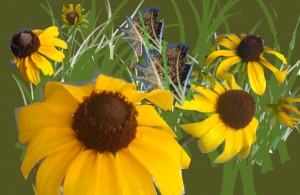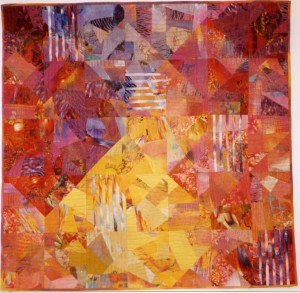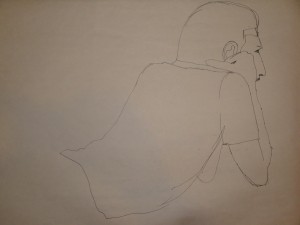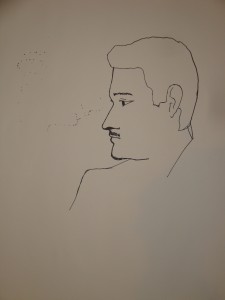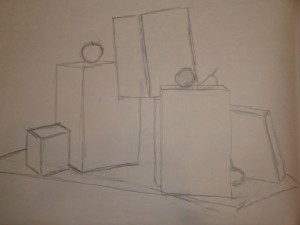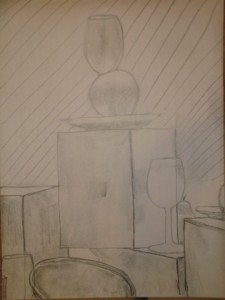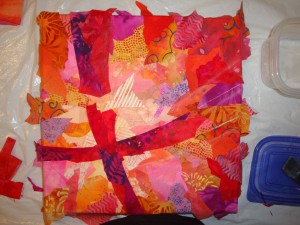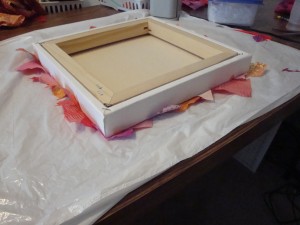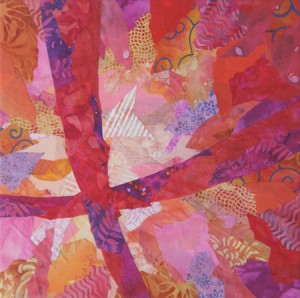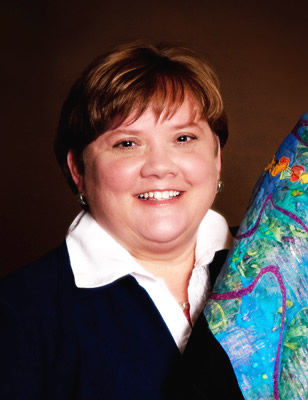Finally, we added white charcoal to our tools and learned about shading to create a sense of form or shape. (Yeah, using boxes AGAIN!) As we had done earlier, our instructor had us create quick thumbnail sketches of compositions that we found interesting. (Click for a larger image.)
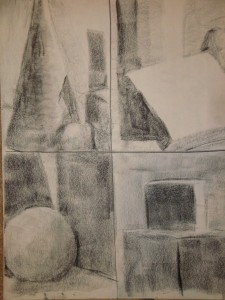
To her credit, she encouraged us to think about composition throughout the course. Her suggestions were exactly the things I think about in my fabric collage designs: zoom in on an intriguing part, fill the space, make your subject touch the edges of your paper.
After creating the thumbnail sketches, we were asked to pick one and to develop it into a more finished piece. Unlike the hurried gesture sketches of the early classes, we were now spending about 45 minutes on these larger pieces.
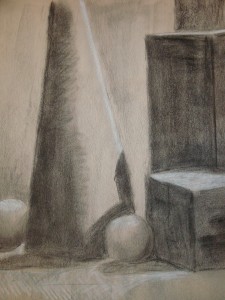
For our last two weeks in class, we focused on value and drew on black paper. (I was too cheap to purchase the black paper for the first session. However, after seeing everyone else’s results, I bought it for the final class. See the July 28 post.)
We had plenty of time to create the very last drawing for class, one in which we tried to capture both shapes and reflections. This is what I chose to focus on:
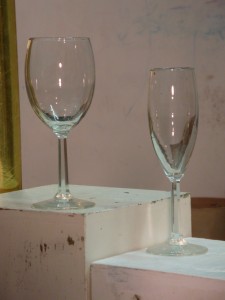
I used a little artistic license to change the composition and came up with this:
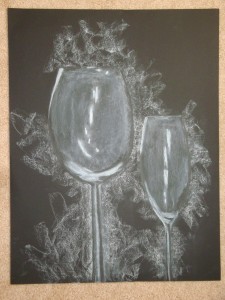
Hey! Not bad! I was delighted with it.
An interesting note: drawing with white onto black paper required lots of drawing with my eraser! (I don’t mean erasing my mistakes. I mean erasing away the white smudges to get the black to show.)
My conclusions:
– Taking a drawing class was a very good way to improve my skills of observation, which is the primary component of drawing.
– I can draw! But, only if I’m willing to be patient, concentrate, really study my subject, and and take my time.
– I have a hard time being patient, concentrating, really studying my subject, and taking my time.
It’s good to know that I have some drawing skill in my repetoire, but I think I’m too impatient to use it very often. It’s still work for me. I know it would get easier if I spent more time practicing. However, I don’t see that happening any time soon. Instead, I’m distracted by my next creative opportunity.
Ellen Lindner
